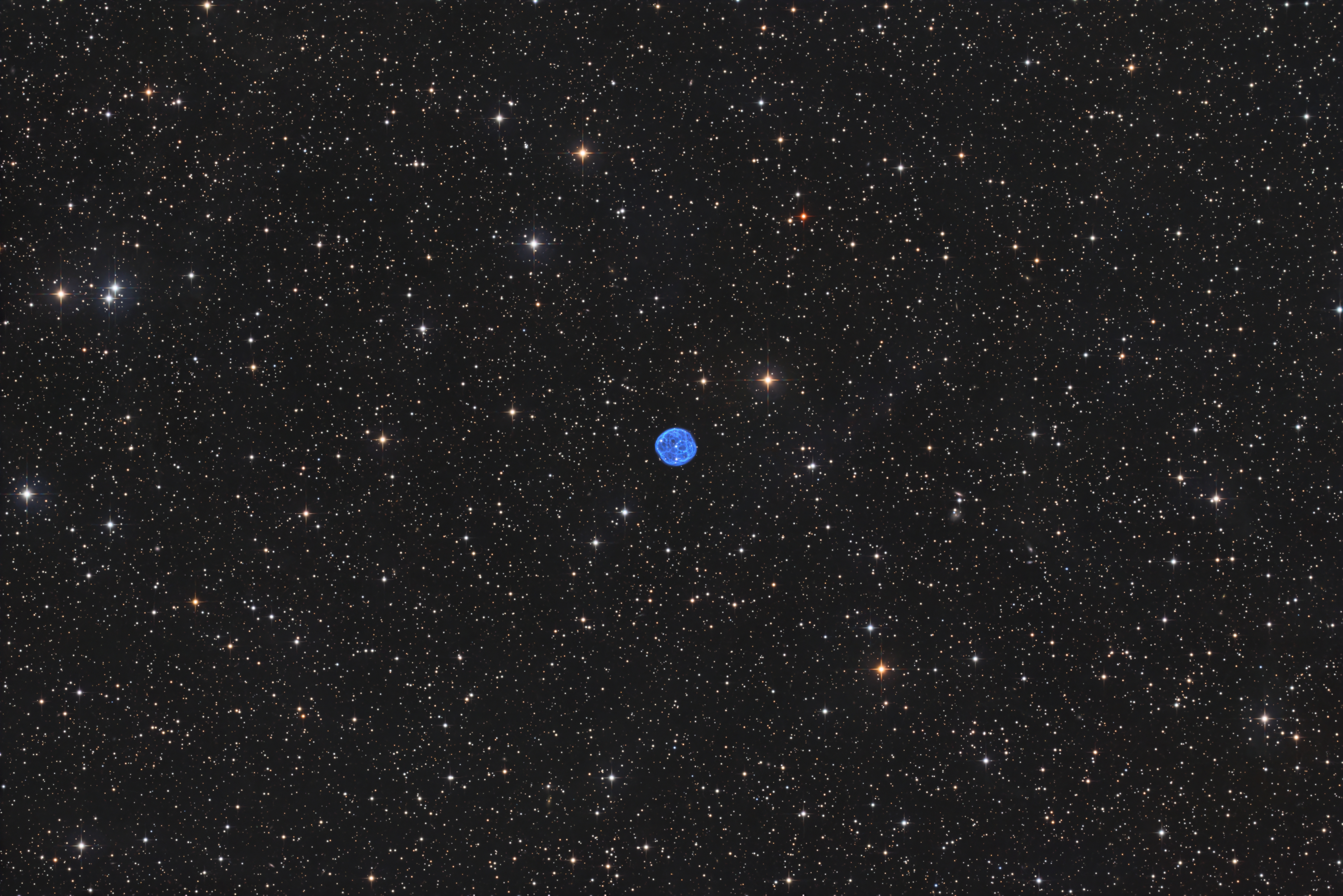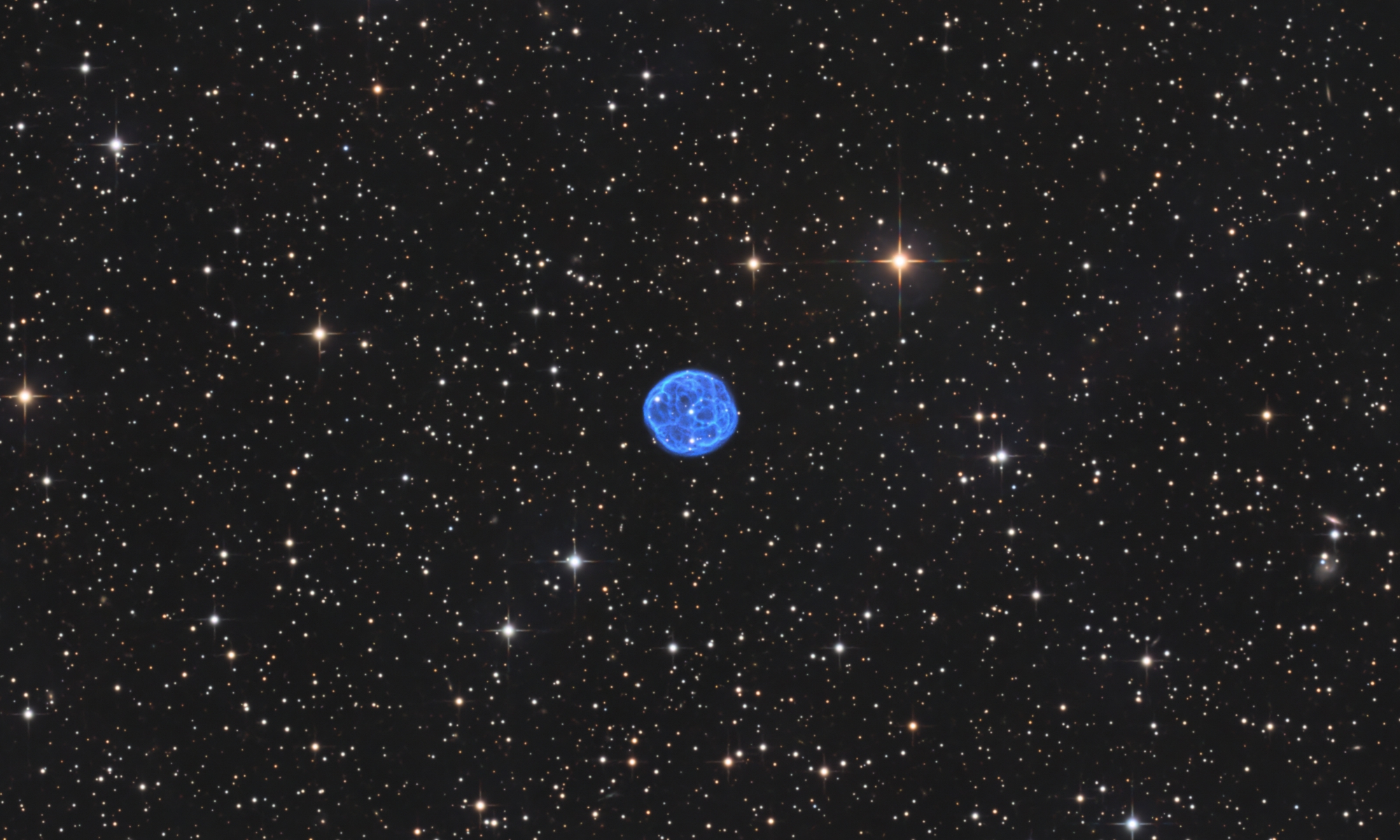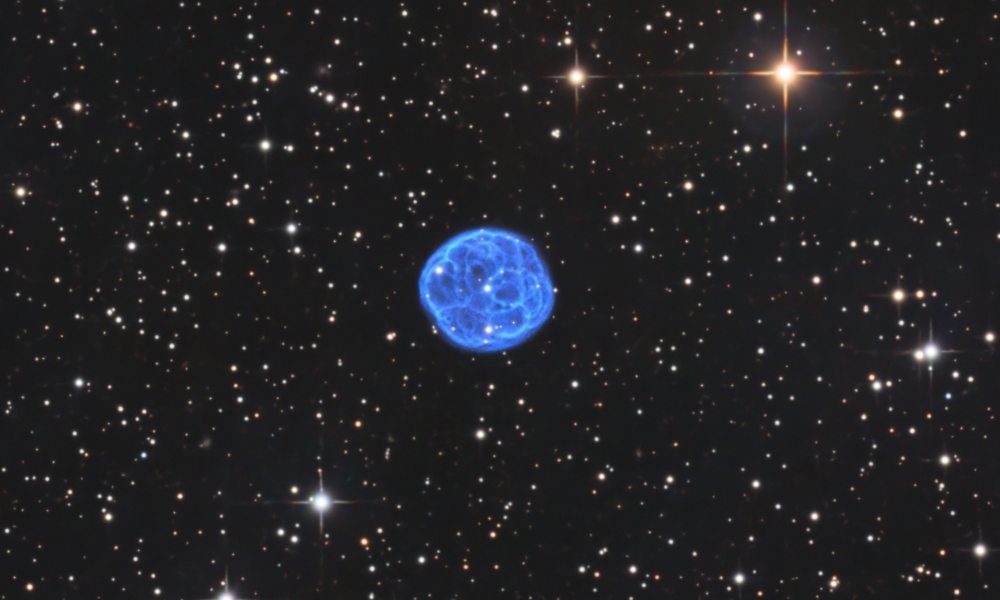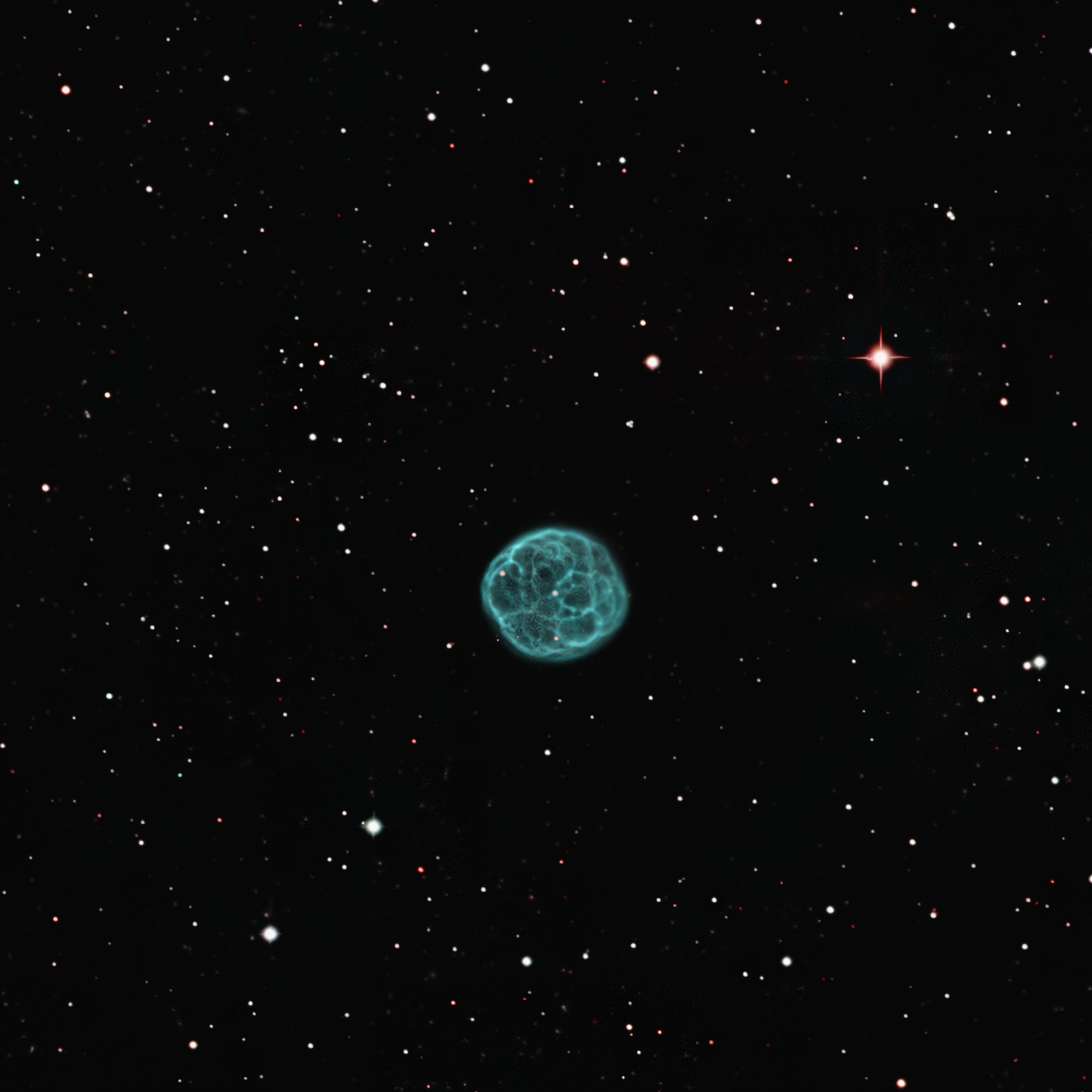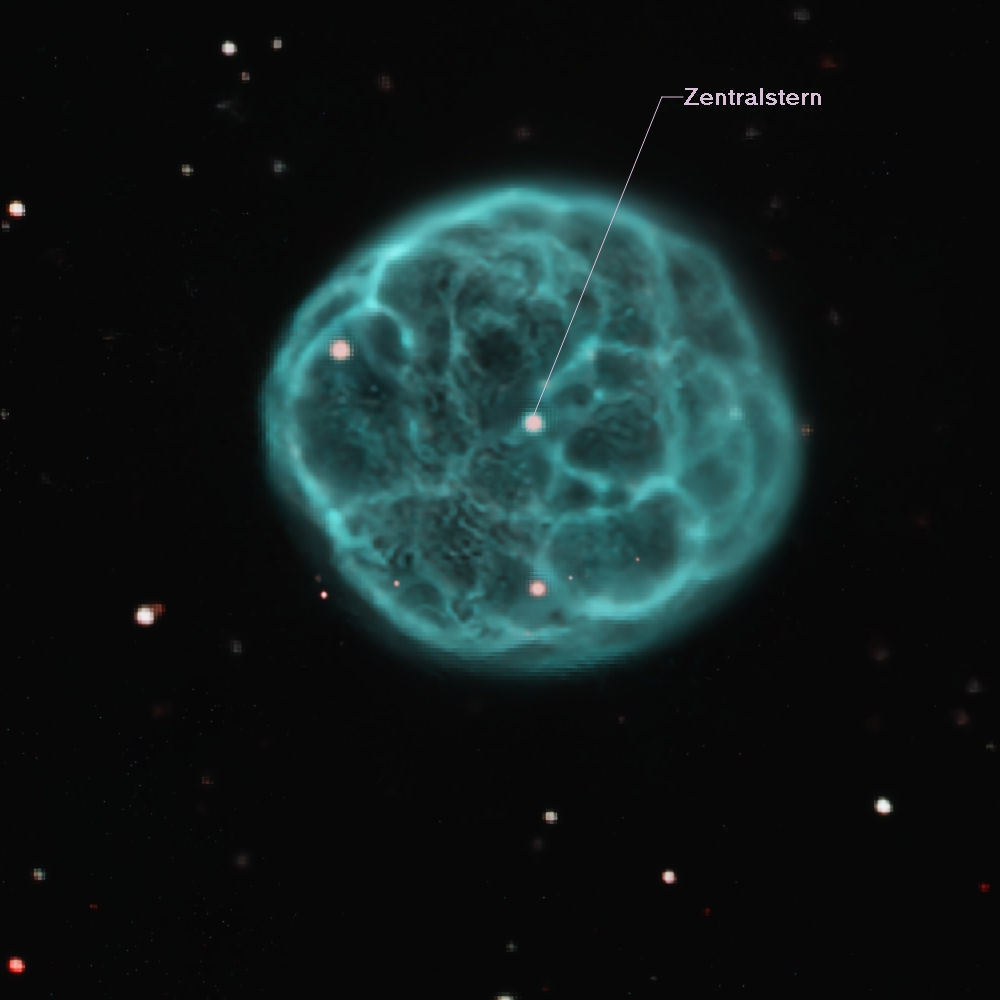Abell 43 is a planetary nebula with several distinctive characteristics
Discovery and Classification
Abell 43 was discovered in 1955 by American astronomer George Ogden Abell on the photo plates of the Palomar Observatory Sky Survey (POSS) . It was initially listed as number 31 in his 1955 catalog, then renumbered as nebula 43 in his complete 1966 catalog of 86 planetary nebulae.
Physical Characteristics
Abell 43 is one of a handful of challenging planetary nebula to detect, with an intricate lace-like network of detail in this sphere of gas that has a spherical nature like that of Abell 39 . It has a magnitude of 14.7, but the light is spread out into ghostly wisps , making it extremely faint and difficult to observe even with sensitive equipment under dark skies.
The nebula is located in the constellation Ophiuchus and is described as moderately large. It’s nicknamed the “Galactic Soccerball” because images remind one of the seams of a soccerball, geometrically resembling a “truncated icosahedron” .
Central Star
The central star of Abell 43 is particularly interesting from an astronomical perspective. It’s a hybrid PG 1159 star, which are hydrogen deficient post-AGB stars on their way to the white dwarf cooling sequence that show small amounts of atmospheric hydrogen. High-speed photometry has detected 6 significant pulsations with periods between 2380 and 6075 seconds, making it notable for having some of the longest pulsation periods among planetary nebula central stars.
Observational Challenges
Even under dark skies, Abell 43 is difficult to detect and challenging to image , requiring long exposure times and specialized equipment to reveal its structural details. This extreme faintness makes it one of the more elusive targets for amateur astronomers and even poses challenges for professional observations.
Der Zentralstern von Abell 43 ist aus astronomischer Sicht besonders interessant. Es handelt sich um einen Hybridstern der Gattung PG 1159. Dabei handelt es sich um wasserstoffarme Post-AGB-Sterne auf dem Weg zur Abkühlungsphase des Weißen Zwergs, die geringe Mengen atmosphärischen Wasserstoffs aufweisen. Mittels Hochgeschwindigkeitsphotometrie wurden sechs signifikante Pulsationen mit Perioden zwischen 2380 und 6075 Sekunden nachgewiesen. Damit zählt er zu den längsten Pulsationsperioden unter den Zentralsternen planetarischer Nebel.
Dreidimensionale Struktur
Asymmetric Planetary Nebulae 5, (Ebrary, Cambridge, USA),
Weiterführende Informationen
Technische Daten: AstroBin
Weitere Bildausarbeitung der selben BTB-Daten: astroimages
Quellenhinweis: Texterstellung mit Hilfe von Claude


